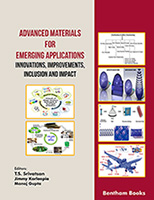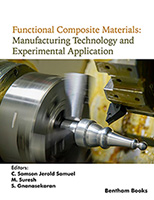Advanced ceramics are specified as the new class of ceramic materials made up of high purity synthetic chemicals. In recent years these ceramics gained much research attention in various applications due to their excellent performance. These advanced ceramics are composed of oxides, carbides and nitrides. Ceramic composites which include both the combinations of oxides and non-oxides Ceramic materials are the different class of materials composed of non-metallic stable and inorganic materials. They are brittle, electrically insulated and thermally insulated materials prepared with combination of more than single element. The ceramic materials will have distinct properties due to their grain boundaries in the materials undergo misalignments with nearby grains and their variations in the structure and quality in the perfections and contributions along with shape and size and material internal stress which they are exposed. For the few decades’ people have observed the tremendous increase in the properties like ferroelectric, ferromagnetic, pyroelectric, dielectric and magnetoresistance, superconducting and gas sensing applications. These ceramic materials also became main materials for the advanced technologies like energy transformation storage and supply and also in the manufacturing, medical field technology and transportation, information technology etc. Hence, awareness and knowledge about ceramics and their derived nanomaterials with conceptual understanding are important for the advanced material community.
Advanced Ceramics and Applications in Science, Technology and Medicine explores the various advanced ceramic materials and their down to earth applications in distinct fields such as actuators, energy storage, environmental, 3D printing, electronics, biomedical and EMI shielding. This book provides an overview of the structural and fundamental properties, synthesis strategies and versatile applications of advanced ceramic materials and their composites. This book will be beneficial for students, research scholars, faculty members, R & D specialists working in the area of material science, solid-state science, chemical engineering, power sources and renewable energy storage fields and nanotechnologists. Based on thematic topics, the book contains the following 12 chapters:
Chapter 1 discuss briefly about the importance of piezoelectric actuators and also the principle of piezoelectric actuators. Besides, it is outlined on various advanced ceramic materials for the applications in piezoelectric actuators. In addition to this, some actuator operating methods like finite element method, topology optimization method etc. are also discussed.
Chapter 2 presents briefly an introduction of ceramics, different types of ceramic materials and role of ceramic materials in the evaluation of supercapacitors. Further, it is focused on different advanced ceramic electrode materials for supercapacitor applications. In addition to this some fabrication techniques like hydrothermal technique, molten salt technique, solution precursor flame spray etc. is discussed as well.
Chapter 3 focused on future perspective of magnetocaloric effect in refrigeration process and the isothermal entropy and adiabatic variation are the main properties to confine the refrigeration process. Also, the magnetic materials such as Mn doped Fe alloys and rare earth elements such as Gd, La, Ce etc. mixed composites and their properties are discussed.
Chapter 4 discusses the efficiency of the thermoelectric power generation depends on the figure of merit of the materials and also on the low thermal conductivity and high electrical conductivity. Several ceramic materials and their applications in the field of power generation are also discussed.
Chapter 5 reviews different ceramic materials including their electromagnetic parameters. The electromagnetic absorption property of the ceramic composites and pure ferrites are discussed. Furthermore, the applications of the advanced ceramics in defense systems, microwave communications and biomedical fields are summarized.
Chapter 6 briefly presents the discussion on the effect of electromagnetic radiation on the electronic goods, human health and defense system was elaborated. Furthermore, various ceramic materials were introduced for reducing the electromagnetic radiation pollution thereby microwave absorption process. It is focused on the parameters like magnetic loss and dielectric loss for each ceramic material. Subsequently, the applications of microwave absorbers in various fields were elucidated.
Chapter 7 concentrates on electromagnetic wave interference mechanism and the effected parameters to find the strength of shielding. Also discusses the derived material such as ferrites and its composites, carbon-based materials for shielding the EM interference. In addition, ferrite and polymer composites especially conducting polymer composites have been discussed.
Chapter 8 discusses the presence of intrinsic polarizations into the ferroelectric materials helps them to get polarized easily on the application of the electric field. Also, the mechanism and applications of ferroelectric materials (Bi3.25La0.75Ti3O12, Barium hafnium titanate, La3Ni2NbO9 etc.) in different fields like ferroelectric memory devices, electro caloric devices, magneto electric devices, DRAM capacitors etc. have been discussed.
Chapter 9 reviews the transport properties of semiconducting glasses along with amorphous properties of various materials. In addition, some of the synthesis techniques such as thermal evaporation, chemical vapour deposition, melt quenching etc. have also been discussed.
Chapter 10 presents the applications of 3D printing ceramic materials in various fields. Also discusses the advantages of 3D printing over conventional techniques.
Chapter 11 focused on bio ceramics and preparation of bio ceramics by advanced 3D printing technology. Besides, different inorganic materials used to print bio ceramics such as alumina, zirconia, Leucite, lithium disilicate and mica-based ceramics for different applications in dentistry and orthopedics are also discussed.
Chapter 12 presents briefly the origin of ceramics, its advantages and the historical back ground of the ceramic materials and the classification of ceramics. Moreover, antimicrobial activity and the antimicrobial applications of advanced ceramics are summarized.
KEY FEATURES
-
Overviews on advanced ceramic materials and their derived composites.
-
Coverage on basic research and application approaches.
-
Addresses a wide range of applications in actuators/sensors, energy conversion and storage, 3D printing, antimicrobial, EMI shielding and microwave absorbers.
-
Explores challenges and future directions of advanced ceramic materials.
K. Chandra Babu Naidu
Department of Physics
GITAM Deemed to Be University,
Karnataka,
India
N. Suresh Kumar
Department of Physics
JNTUA College of Engineering
Anantapuramu-515002
Andhra Pradesh
India




